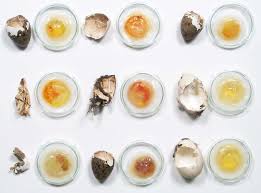SURVEYS have shown that chlorinated hydrocarbon pesticide contaminations are widespread and persist in the environment for several years following application. These pesticides are fat soluble, and tend to accumulate in the fatty tissues of hens and in the egg yolk. Hauver (1965) reported that the U.S.D.A. had tested more than 2,000 poultry fat samples for residues and found low levels in chickens, turkeys, ducks, and geese of all ages and in all locations examined.
Stadelman et al. (1965) found that exposure to the equivalent of 10 to 15 p.p.m. DDT resulted in 4.6 p.p.m. residue in the egg yolk. The residue remained for 26 weeks after removal of the pesticide from the diet.
Many factors which affect pesticide metabolism have been studied in order to develop methods of hastening pesticide depletion from body tissues of poultry. The effects of force molting and dietary protein levels on pesticide depletion were studied . . .
© 1970 Poultry Science Association, Inc.
http://ps.oxfordjournals.org/content/49/1/233.abstract
Received September 10, 1969
Abstract

Stadelman et al. (1965) found that exposure to the equivalent of 10 to 15 p.p.m. DDT resulted in 4.6 p.p.m. residue in the egg yolk. The residue remained for 26 weeks after removal of the pesticide from the diet.
Many factors which affect pesticide metabolism have been studied in order to develop methods of hastening pesticide depletion from body tissues of poultry. The effects of force molting and dietary protein levels on pesticide depletion were studied . . .
© 1970 Poultry Science Association, Inc.
http://ps.oxfordjournals.org/content/49/1/233.abstract
Received September 10, 1969
Abstract
No comments:
Post a Comment